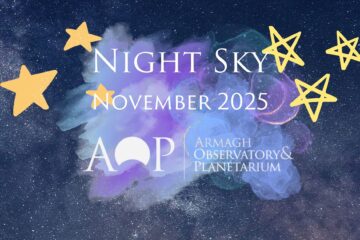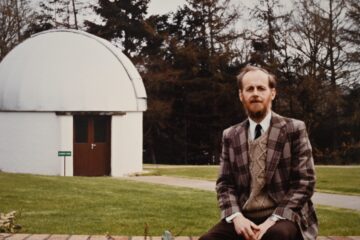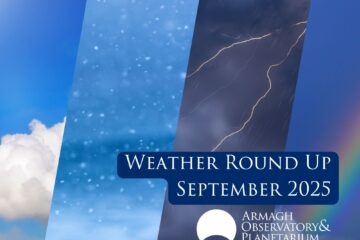Written by Sinéad Mackle
As the warm days of summer gradually give way to the crisp autumn air, the September night sky presents an exquisite canvas of celestial wonders for stargazers. With longer nights and clearer skies, this time of the year offers a remarkable opportunity to observe planets, constellations, and other captivating celestial phenomena. Whether you are an avid astronomer or a casual stargazer, exploring the night sky in September promises to be a memorable and enlightening experience.
Planets
September offers early risers a chance for planet gazing. During the early morning, from around 4am, look towards the Eastern horizon to spot Venus, which is also referred to as the ‘Morning Star’ when visible at this time of day. Its brilliant glow will stand out against the dark morning sky.
Other planets join Venus in the night sky. Jupiter will be seen from around 10pm until sunrise, while Saturn will be playing hide-and-seek with Venus, being visible from sunset until the time Venus rises in the East. With a telescope or even a pair of binoculars, you will be able to observe Jupiter’s four largest Moons, called the Galilean Moons, and Saturn’s iconic rings.
Constellations
As the sky darkens, try gazing toward the east to view a grand display of constellations steeped in mythological tales. One prominent constellation is Pegasus, the winged horse. Easily identified by the Great Square of Pegasus, this magnificent creature is associated with various legends and stories. The four stars that mark the Great Square of Pegasus are known as Alpheratz, Scheat, Markab and Algenib.
Adjacent to Pegasus, you’ll find Andromeda, the princess. This constellation boasts the famous Andromeda Galaxy (M31 or NGC 224), a spiral galaxy that is visible to the naked eye under dark skies.
Furthermore, the Summer Triangle, which consists of the bright stars Vega, Deneb, and Altair, will remain visible in the western sky. This prominent asterism is a striking feature of the summer and early autumn night skies. If you’re able to observe Vega, the light that you’ll see will have left the star 25 years ago as it is 25 light-years away from Earth. This makes it one of the nearer stars in the night sky.
Full Moon
September’s full ‘Corn Moon’ is so called because this is when crops are gathered at the end of the summer season. During this time, the Moon appears particularly bright and rises early, allowing farmers to continue harvesting into the night. This Moon is also sometimes named the ‘Barley Moon,’ and it is often the nearest Full Moon to the autumnal equinox, earning the title of ‘Harvest Moon’. The Moon will be officially full on 29th September at 10.57am.
September Equinox
On the 23rd of September we’ll have the September Equinox which, astronomically speaking, marks our first day of Autumn. In the Southern Hemisphere this equinox marks the start of spring. The September equinox occurs the instant the Sun crosses the celestial equator, an imaginary line from north to south in the sky above the Earth’s equator. This happens on September 22nd, 23rd, or 24th every year.
Spot the Space Station
The International Space Station will also be visible this month. It is the largest man-made object ever constructed, and typically six astronauts are always onboard. After the Sun and the Moon, it is the brightest object visible in the sky.
When stargazing this September, remember to choose a location away from light pollution for the best experience, and don’t forget to check out our website for stargazing evenings at Armagh Planetarium that will start next month.






2 Comments
Stephentreston · September 12, 2023 at 10:01
Can I book a stargazing evening
Heather Alexander · December 4, 2023 at 17:05
Hi Stephen, all stargazing events can be booked through our website: http://www.armagh.space